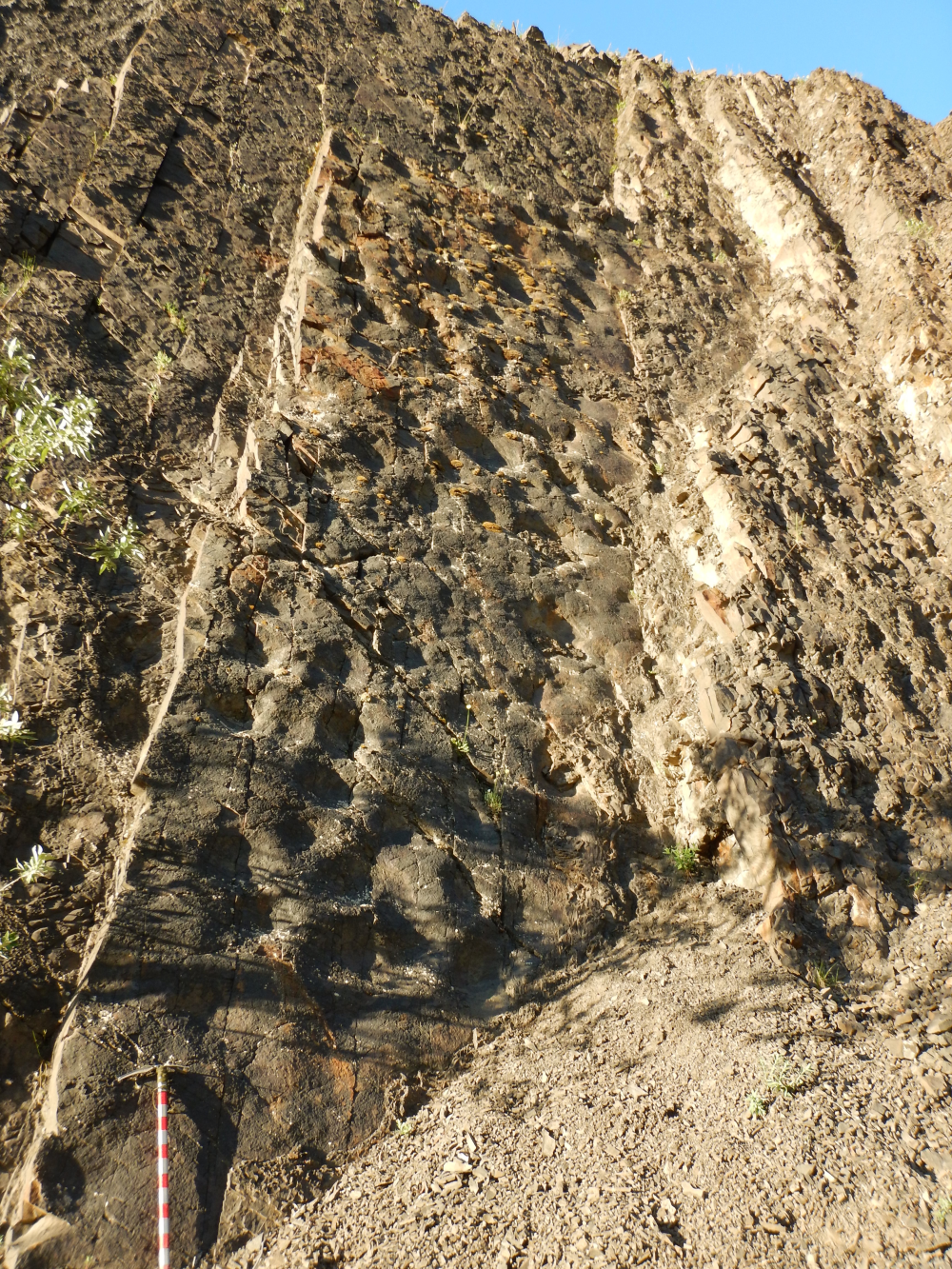Alaska’s largest dinosaur track site has been discovered in Denali National Park, and researchers are calling it a “dinosaur coliseum”. If the epic nickname isn’t enough to convince you that this is a big deal, a new study has described how the coliseum contains a record number of species’ footprints across many generations in the form of tracks preserved layer upon layer.
The vertical lasagne of footprints is made up of a combination of hardened impressions left in ancient mud by the footfall of heavy dinosaurs, and the casts created by sediment that fell into those impressions and hardened. They are many, from a diverse cast of dinosaurs, and they’re remarkably detailed.
“They are beautiful,” said Pat Druckenmiller, senior author of the paper and director of the University of Alaska Museum of the North, in a statement. “You can see the shape of the toes and the texture of the skin.”
Initially, the cliffs that make up the coliseum didn’t look all that worth the seven-hour hike it took to reach them, but as day turned to night, a fortuitous change in the light revealed to the team that they had found something truly special.
One wall of the dinosaur coliseum shows numerous depressions of hadrosaur footprints.
Image credit: Patrick Druckenmiller
“When the Sun angles itself perfectly with those beds, they just blow up,” said Dustin Stewart, the paper’s lead author and a former UAF graduate student. “Immediately all of us were just flabbergasted, and then Pat said, ‘Get your camera.’ We were freaking out.”
If you’re wondering why dinosaur footprints are now on a cliff, it’s all thanks to the quirks of living on a planet made up of shifting tectonic plates. Back in the Late Cretaceous, the cliffs were sediment flat on the ground, but in time, tectonic plates ground together and shifted to create the Alaska Range, sending a section of the crust up into the air. It’s a reminder of the weird places dinosaur footprints can crop up, including restaurant floors.
Before all the seismic drama, the flat sediment was probably near a watering hole on a large floodplain. It would’ve been a hot spot for dinosaur activity, drawing in juvenile and adult animals of different species for thousands of years.
The coliseum’s cliff face is marked by hundreds of footprints from different dinosaur species.
Image credit: Patrick Druckenmiller
According to the footprint lasagne, the site was popular with large plant-eating duck-billed and horned dinosaurs, as well as some of the rarer carnivores like raptors, tyrannosaurs, and a few small wading birds.
“It was forested and it was teeming with dinosaurs,” said Druckenmiller. “There was a tyrannosaur running around Denali that was many times the size of the biggest brown bear there today. There were raptors. There were flying reptiles. There were birds. It was an amazing ecosystem.”
Now that the setting Sun has enabled scientists to shed light on the significance of this popular dinosaur site, the plan is to continue research while collaborating with the National Park Service to preserve its remarkable geology.
A single large meat-eating dinosaur track, likely from a tyrannosaur.
Image credit: Dustin Stewart
“On one hand, we must protect world-class fossil sites like The Coliseum from disturbance and theft,” said Denali National Park’s geologist, Denny Capps. “On the other hand, we encourage visitors to explore for fossils in their geologic context to better grasp the evolution of landscapes and ecosystems through time, while leaving them undisturbed for others to appreciate.”
The study is published in the journal Historical Biology.
Source Link: 70-Million-Year-Old "Dinosaur Coliseum" Is A Vertical Lasagne Of Footprints
